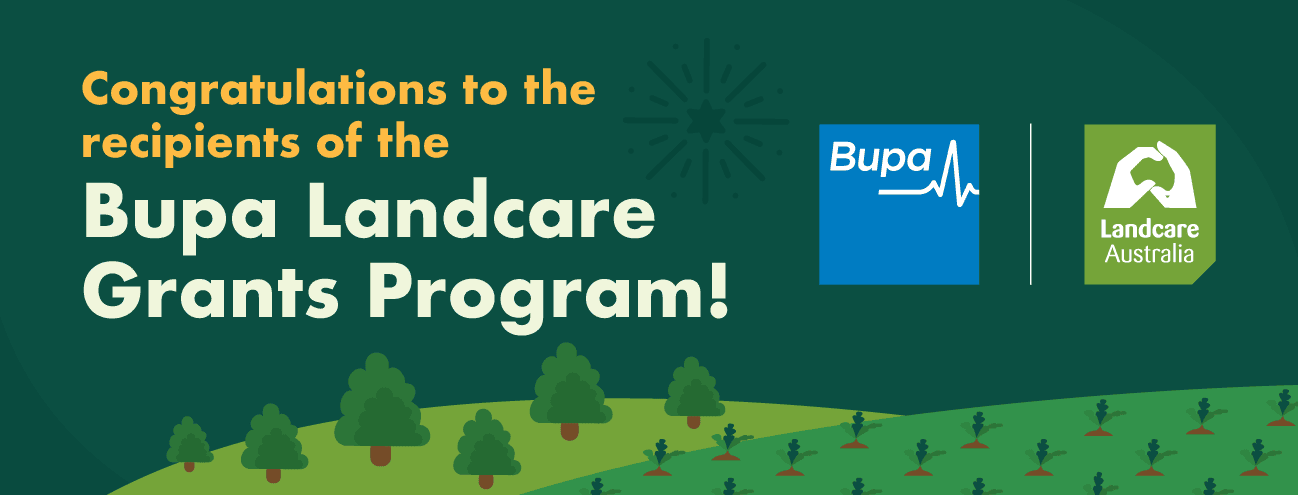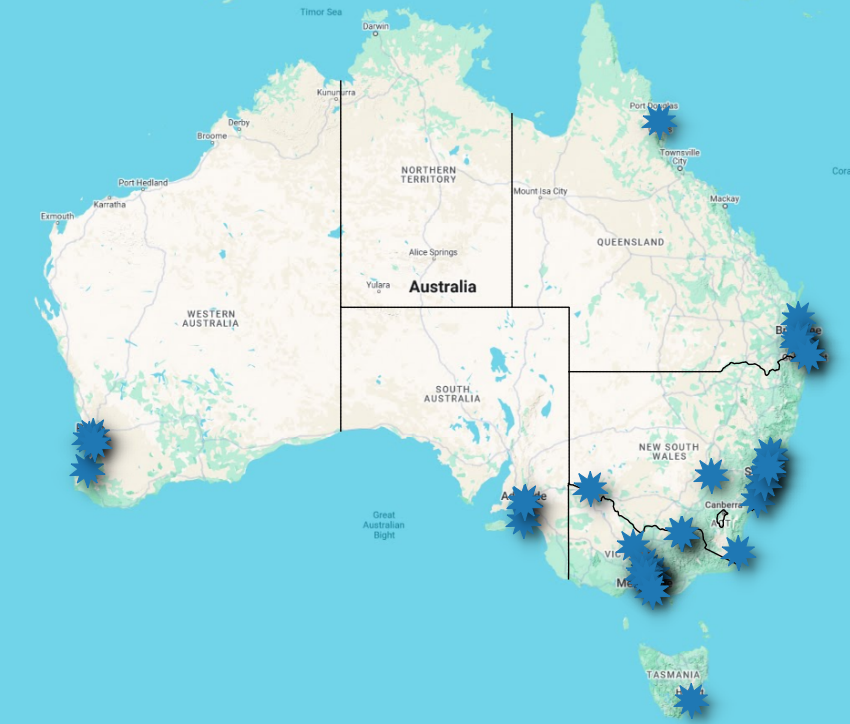
Bupa Healthy Cities Landcare Grants Program
Congratulations to the 41 groups and organisations awarded funding through the 2024 Bupa Landcare Grants Program! This initiative celebrates Bupa’s ‘Healthy Cities Challenge’ by supporting community-led projects to plant over 100,000 native trees, shrubs and groundcovers in urban and peri-urban areas across Australia.
The funded projects will focus on planting locally endemic trees and shrubs, enhancing native vegetation connectivity, and creating new green spaces in urban areas. These efforts support community wellbeing by offering local volunteers the opportunity to get active through landcare, which benefits both mental and physical health, and they create healthier, greener environments that encourage all community members to spend time outdoors and stay active.
Check out the successful recipients below.
| Organisation Name | Project Location | Project Title |
|---|---|---|
| Avoca and North Avoca Dunecare | Avoca Beach NSW | Avoca Beach Dunecare - Native Plants Project |
| Watergum Community Inc. | Banora Point NSW | Community Connections for Environment in the Tweed Shire |
| Cooks River Valley Association | Canterbury NSW | Developing Green Connectivity And Bush bird Habitat On The Cooks River |
| Mid Lachlan Landcare Incorporated | Cowra NSW | Glossy Black Cockatoo Habitat Planting |
| Earthcare Park Landcare Group | East Maitland NSW | Habitat Haven In The Park |
| Fingal Head Coastcare Incorporated | Fingal Head NSW | Fingal Head Community Tree Planting Project 2025 |
| Landcare Illawarra Inc | Kiama NSW | Kiama Coastal Community Plantings |
| Randwick City Council | Maroubra NSW | Rooted in Community: Planting For A Greener Tomorrow |
| Pambula Wetlands and Heritage Project Inc | Pambula NSW | Protecting and enhancing the Panboola wetlands environment |
| Hunter Region Landcare Network | Rutherford NSW | Rutherford Landcare's Biodiversity Boost |
| Central Coast Wetlands - Pioneer Dairy Land Manager | Tuggerah NSW | Pioneer Creek Understorey Rehabilitation |
| Oxley Creek Catchment Association | Durack QLD | Archerfield Wetlands Parkland - Walking Track and Blunder Creek Revegetation |
| North Brisbane Catchments | Geebung QLD | Fig Tree Corner Downfall Creek Virginia |
| GreenBrook Association - The Wildlife Preservation Society of Queensland Kedron Brook Catchment Branch Inc. | Grange QLD | GreenBrook Association Strategic Grassland Restoration Project |
| Lota Creek Bushcare Group - Bulimba Creek Catchment Coordinating Committee | Lota QLD | Lota Creek Endangered Lacustrine and Palustrine Wetlands Project |
| Treeforce Association Inc. | Redlynch QLD | Freshwater Creek Corridor Linkage |
| Sunshine Coast Regional Council | Verrierdale QLD | Doonan Planting Festival |
| Biodiversity Victor Harbor Incorporated | Encounter Bay SA | The Bluff (Rosetta Head) Victor Harbor Revegetation Project |
| City of Salisbury - Friends of Pledger Wetlands | Mawson Lakes SA | Revegetation Of The Pledger Wetlands At Mawson Lakes |
| City of Salisbury | Salisbury Park SA | Little Para Revegetation Project |
| Landcare Tasmania Inc. | Hobart TAS | Connecting Community Coastcare |
| Port Phillip EcoCentre Inc. | Albert Park VIC | Albert Park Habitat Revival – An Intergenerational Biodiversity Classroom And Corridor |
| Darebin Creek Management Committee | Alphington VIC | Darebin Creek Corridor Tools for Success |
| Parklands Albury Wodonga Limited | Bandiana VIC | Wildlife Corridor To Ryans Lagoon Wetlands |
| Darebin Creek Management Committee | Bundoora VIC | Greening Whittlesea Woodland Bird Byway |
| Cabarita Community Inc. | Cabarita VIC | Make the Lake - Trees To Please |
| Friends of Apollo Parkways | Greensborough VIC | Greening For Greensborough Project |
| Northern Bendigo Landcare Group | Huntly VIC | Huntly Natural Reserve - Hidden Gem To Valued Community Resource |
| Friends of Kalorama Park | Kalorama VIC | Kalorama Park Recovery |
| Yarra Ranges Shire Council | Kalorama VIC | ngurrak barring|RidgeWalk Artwork Plantings And Education |
| Westgate Biodiversity: Bili Nursery and Landcare | Port Melbourne VIC | Western Plains Grassland's- Living Ark |
| Bayside City Council | Sandringham VIC | Tjilatjirrin Habitat Linkage project |
| Friends of Kororoit Creek | Sunshine VIC | Kororoit Creek Proximity Drive and Bug Rug Ecological Restoration |
| Wallan Environment Group Inc. | Wallan VIC | Wallan's Urban Forest Stage 1 - Taylors Lane and Taylors Creek Reserve |
| Friends of Dandenong Valley Parklands Inc | Wheelers Hill VIC | Medburies Revegetation |
| Wodonga Urban Landcare Network | Wodonga VIC | Project SPROUT- Sustaining Parks, Restoring our Urban Terrain |
| Woolamai Beach SLSC | Cape Woolamai VIC | Dune Revegetation, Weed Control and Beach Clean-up Woolamai Beach |
| Landcare SJ Inc. | Byford WA | Restoration of John Crescent Reserve |
| Friends of Lake Claremont Limited | Claremont WA 6010 Australia | Lake Claremont Conservation Project |
| City of Bunbury | College Grove WA | St Peters Green Rehabilitation |
| Trillion Trees Australia | Viveash WA | Kweela Community Planting Day |
You can read more about each project on Restor.
